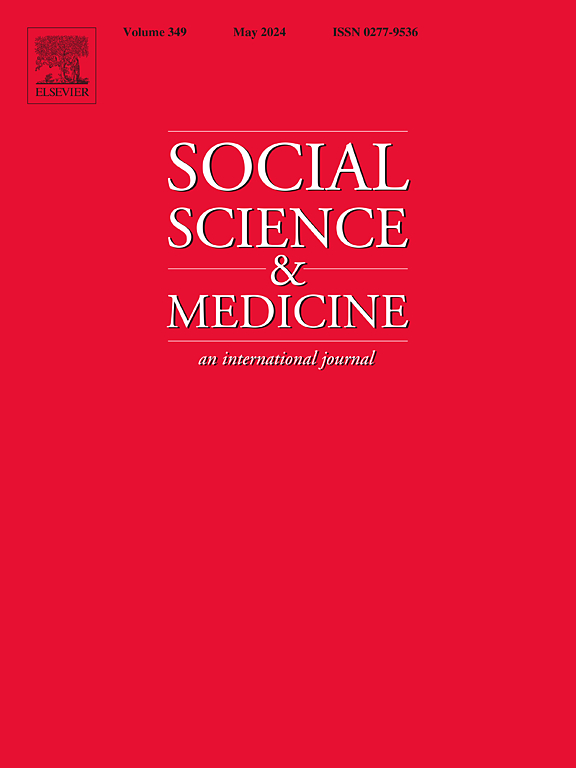Income inequality modified adolescent substance use trajectories from 2018-19 to 2020–21: Findings from the COMPASS study
IF 5
2区 医学
Q1 PUBLIC, ENVIRONMENTAL & OCCUPATIONAL HEALTH
引用次数: 0
Abstract
Purpose
Little is known about the structural determinants of adolescent substance use during times of crises. This study examined whether income inequality modified trends in adolescent substance use during the COVID-19 pandemic.
Methods
Adolescent (12–19 years) data (n = 22007) from the Cannabis, Obesity, Mental health, Physical activity, Alcohol use, Smoking, and Sedentary behaviour (COMPASS) study were linked with census division (CD) data (n = 42) from the 2016 Canadian Census. Adolescents self-reported on their alcohol (including binge drinking), cigarettes, e-cigarettes, and cannabis use via questionnaire in 2018–19, and again in either 2019–20, or 2020–21. Income inequality was calculated at the CD-level of the school. Multilevel logistic regression models were used to examine whether income inequality modified trends in adolescent substance use through the inclusion of a cross-level interaction term (income inequality∗time).
Results
The interaction term (income inequality∗time) was significant for monthly use of cigarettes, e-cigarettes, and alcohol, indicating heterogenous trajectories based on CD income inequality. Students attending schools in less equal areas had higher odds of monthly cannabis use at baseline (OR = 1.49, 95 % CI: 1.24, 1.80), but the interaction term was not significant indicating homogenous trajectories. Income inequality was not associated with monthly binge drinking at baseline and did not modify trajectories over time. Gender stratified models revealed similar results for males and females except for e-cigarette use.
Conclusion
Income inequality may have modified adolescent substance use trajectories during the COVID-19 pandemic, with both increased and decreased likelihoods observed. More research investigating potential mechanisms is needed.
收入不平等改变了2018-19年至2020-21年青少年物质使用轨迹:COMPASS研究的结果
目的危机时期青少年药物使用的结构性决定因素所知甚少。本研究调查了收入不平等是否会改变2019冠状病毒病大流行期间青少年药物使用的趋势。方法将来自大麻、肥胖、心理健康、体育活动、饮酒、吸烟和久坐行为(COMPASS)研究的青少年(12-19岁)数据(n = 22007)与来自2016年加拿大人口普查的人口普查部门(CD)数据(n = 42)相关联。青少年在2018-19年、2019-20年或2020-21年通过问卷自我报告了他们的酒精(包括酗酒)、香烟、电子烟和大麻使用情况。收入不平等是在学校的cd水平上计算的。采用多水平逻辑回归模型,通过纳入跨水平相互作用项(收入不平等*时间)来检验收入不平等是否改变了青少年物质使用的趋势。结果每月使用香烟、电子烟和酒精的交互项(收入不平等*时间)显著,表明基于CD收入不平等的异质性轨迹。在不平等地区上学的学生在基线时每月使用大麻的几率更高(OR = 1.49, 95% CI: 1.24, 1.80),但相互作用项不显著,表明同质轨迹。在基线上,收入不平等与每月酗酒无关,也不会随着时间的推移改变轨迹。性别分层模型显示,除了电子烟的使用外,男性和女性的结果相似。结论:在2019冠状病毒病大流行期间,收入不平等可能改变了青少年药物使用轨迹,观察到可能性增加和降低。需要更多的研究来调查潜在的机制。
本文章由计算机程序翻译,如有差异,请以英文原文为准。
求助全文
约1分钟内获得全文
求助全文
来源期刊

Social Science & Medicine
PUBLIC, ENVIRONMENTAL & OCCUPATIONAL HEALTH-
CiteScore
9.10
自引率
5.60%
发文量
762
审稿时长
38 days
期刊介绍:
Social Science & Medicine provides an international and interdisciplinary forum for the dissemination of social science research on health. We publish original research articles (both empirical and theoretical), reviews, position papers and commentaries on health issues, to inform current research, policy and practice in all areas of common interest to social scientists, health practitioners, and policy makers. The journal publishes material relevant to any aspect of health from a wide range of social science disciplines (anthropology, economics, epidemiology, geography, policy, psychology, and sociology), and material relevant to the social sciences from any of the professions concerned with physical and mental health, health care, clinical practice, and health policy and organization. We encourage material which is of general interest to an international readership.
 求助内容:
求助内容: 应助结果提醒方式:
应助结果提醒方式:


